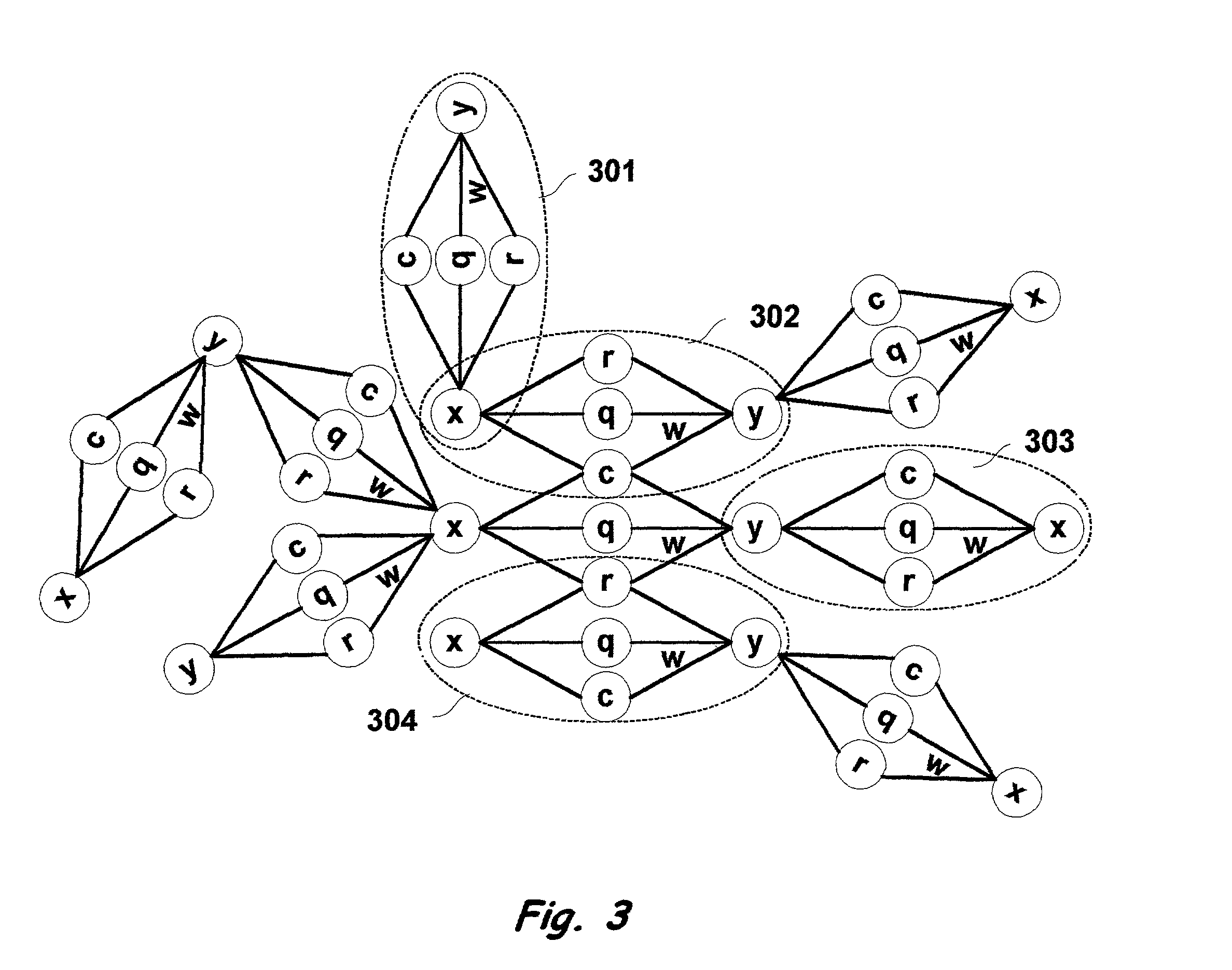The typical failing of these systems has been that the number of rules required to express the complexity of language has been extremely high and the sequential
processing of these rules has lead to unacceptably long
processing times.
Unfortunately, as the lists proliferate,
list management becomes impractical and correlation of related constraints in different lists or even at opposite ends of the same
list consumed too much computational effort and took too long.
This was a special
syntax or structure for production rule type systems as described above and performance problems made these approaches equally impractical.
Unfortunately, they require an inordinate amount of
training time to "learn" about each new object.
Furthermore,
language understanding involves multiple dimensions, and the parts of the brain responsible for these functions appear to have more complex structures and processes.
These have introduced incremental advances in capabilities, but without the full analysis of context, they have not significantly increased the accuracy of language interpretation.
But without the dimension of context, the accuracy will never approach human competency in language comprehension.
Though these approaches hold the promise of much higher accuracy, the proliferation of nodes in the semantic and Bayesian networks have made it impossible to achieve sufficient speeds to process language without unacceptable delays.
The complexity of the input may be arbitrary, but the more complex the input, the more complex the wave will be, hence the more difficult to trace.
The science of tracing activation
waves in the brain is not yet mature enough to trace the entire path of activation flow either backward or forward from
neuron to
neuron for a given input.
The term "emergent behavior" has been applied to the
human brain and other complex systems whose internal behavior involves non-deterministic functionality or is so complex, or involves the interaction of so many pieces, that tracing the process from beginning to end is not possible or not feasible.
Because of the power of computers and their ability to track internal activity, it is not possible to produce 100% untraceable processes just as it is not possible to produce a random
number generator that is actually random and not ostensibly random.
Human languages are such encoding schemes, but their irregularities make it difficult for use in their normal form for automated processing.
Non-deterministic or "fuzzy" processing techniques and encoding approaches that deliver output from a process that is virtually impossible to determine based on the inputs because of the sheer number of permutations and / or the complexity of the weighting mechanisms and processes to adjust weights during the course of the process and prior to the output.
Without the context of the real-world knowledge, the problem of
polysemy is too difficult to solve.
Second, the input and output can be arbitrarily complex without sacrificing accuracy while most existing neural networks are generally limited to two or three-dimensional problems.
This limitation arises from the widely accepted model of storing no explicit values of knowledge, but implicitly representing the learned information in the overall weighting between the complex, but individually meaningless aggregation of simple, ordered nodes in a neural network.
In addition, the directional flow of potentials in most existing neural networks limits their ability to simulate human cognitive activity.
Most of nodes may be irrelevant and useless in the determination of the solution, but they are processed every time regardless.
The structure of nodes in the network is multi-dimensional, irregular, and unpredictable.
The link structure is, therefore,
chaotic and unpredictable.
These functions may create each new container as needed or as processes begin, manipulate the contents during the course of processing solutions, and destroy the container when the contents are no longer needed.
Because of the slow performance of large Bayesian networks, the problem is decomposed into a plurality of smaller networks called context structures.
In
causal reasoning, especially in attempting to find missing information or anaphora, a risk exists for the
system to identify coincidental co-occurrences as causally linked.
On the other hand, the correct assertion that "All people who ate pickles in 1875 are now dead" does not establish a proper
causal link between pickles and death.
The behavior of these functions may be self-organizing based on the input, and therefore may be unpredictable.
It is possible that a context structure may exist in memory for the object, but that it may not contain the appropriate attribute.
The term "emergent behavior" has been applied to the
human brain and other complex systems whose internal behavior involves non-deterministic functionality, or is so complex, or involves the interaction of so many working parts that tracing the process from beginning to end is not possible or not feasible.
The new wave of activation has the potential to increase and / or decrease the magnitude of the vector object that spawned the wave, thus potentially forcing it below threshold and deselecting it.
Maximum probability prediction leads to higher error rate, thus the
system suppresses maximums during the
doping cycles (1509).
The challenge is to add new propositions to the knowledge network that are truly needed to work with the new language.
The proliferation of personal electronic devices has introduced much duplication in underutilized device components.
This is because the voltages are so small and the network so large that there is no way the conscious mind can track the flow of impulses.
 Login to View More
Login to View More  Login to View More
Login to View More 


